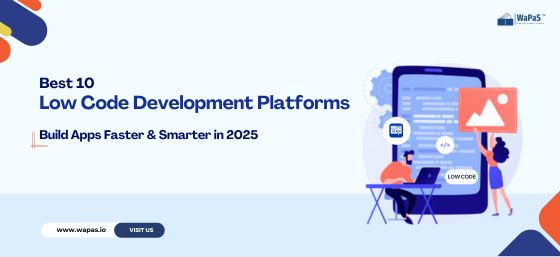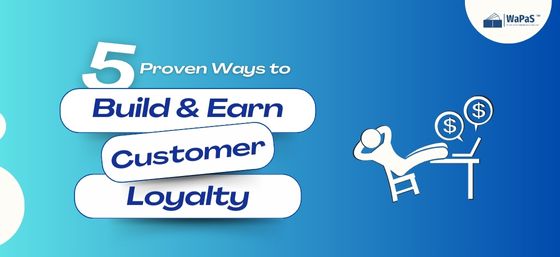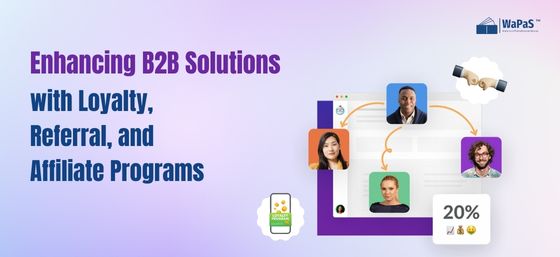Best 10 Low Code Development Platforms to Build Apps Faster and Smarter in 2025
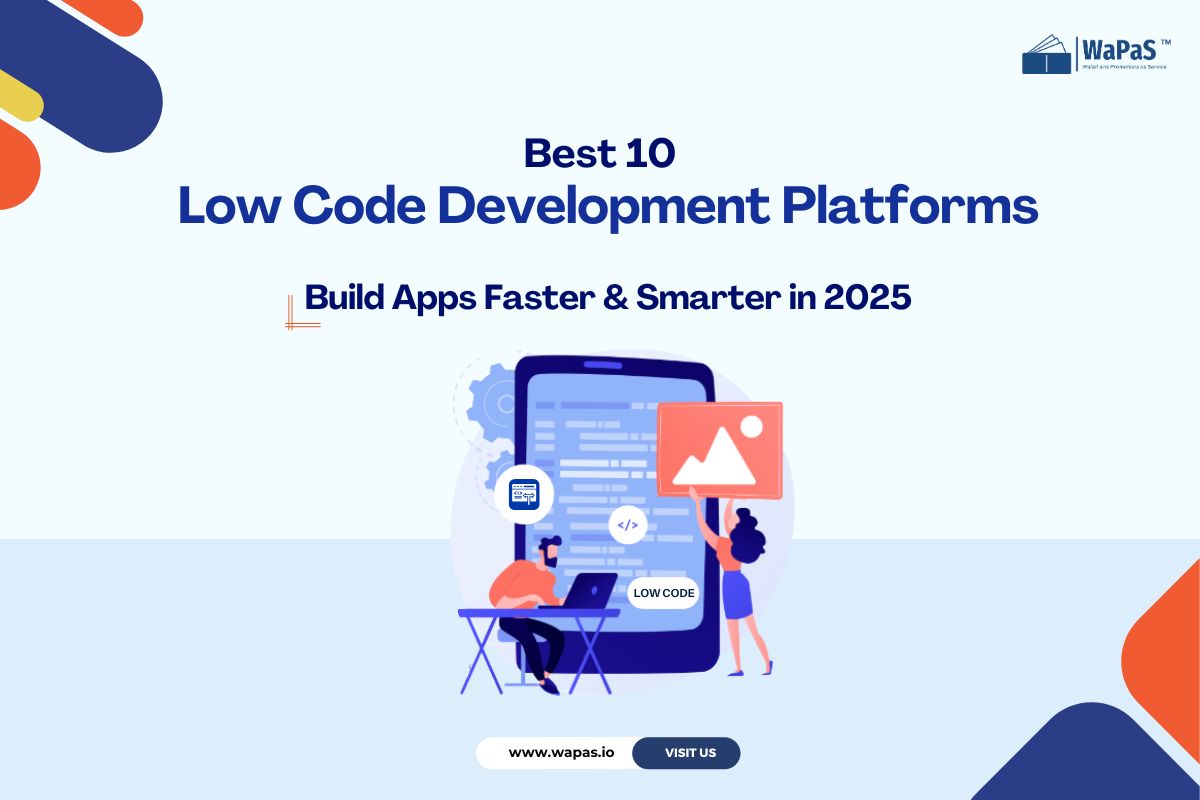
In today’s fast-paced digital world, businesses and developers need efficient solutions to build applications quickly without the complexity of traditional coding. Low-code development platforms have emerged as game-changers, allowing companies to develop applications with minimal coding, using intuitive drag-and-drop interfaces, pre-built templates, and automation tools.
Whether you’re a startup, enterprise, or business professional with no coding experience, low-code platforms provide an accessible way to create powerful applications. These platforms reduce development time, lower costs, and improve collaboration between IT teams and business users. As a result, organizations can respond faster to market changes, customer needs, and internal process automation.
By 2025, the adoption of low-code platforms is expected to rise significantly, empowering businesses across industries, including finance, healthcare, retail, and manufacturing, to transform their operations digitally. The growing demand for automation, AI-powered workflows, and cloud-based solutions makes low-code development an essential tool for businesses looking to scale efficiently.
In this blog, we will explore the 10 best low-code development platforms in 2025, highlighting their key features, pricing, target users, and ideal use cases. Whether you need a simple internal tool or an enterprise-grade application, this guide will help you choose the right platform to build apps faster and smarter.
What is a Low-Code Development Platform?
A low-code development platform is a software environment that allows users to create applications using graphical user interfaces and configuration instead of traditional programming. These platforms enable faster app development with minimal hand-coding, making it easier for businesses to transform operations and improve efficiency digitally.
Why Are Companies Embracing Low-Code Development?
With the increasing demand for digital solutions, companies are turning to low-code platforms for several reasons:
- Faster Time to Market: Low-code speeds up application development, reducing the time from concept to deployment.
- Addressing the Developer Shortage: The global shortage of skilled developers makes low-code platforms an ideal solution for businesses needing rapid application development.
- Cost Reduction: Businesses save money by reducing dependency on expensive developers and IT teams.
- Agility & Scalability: Low-code solutions allow organizations to quickly adapt to market changes and scale applications effortlessly.
Key Benefits of Low-Code Platforms
1. Faster Application Development
Low-code platforms significantly speed up the app development process by providing pre-built templates, drag-and-drop components, and automation tools.
2. Reduced Development Costs
Since low-code development requires fewer resources and expertise, companies can save money on hiring and training developers.
3. Increased Business Agility
Organizations can quickly respond to changing market conditions, create new apps, and modify existing ones with minimal effort.
4. Improved Collaboration
Low-code platforms allow IT teams and business users to collaborate effectively, bridging the gap between technical and non-technical professionals.
5. Enhanced Security & Compliance
Many low-code platforms provide built-in security features, regulatory compliance support, and data encryption to ensure secure app development.
Top 10 Low-Code Development Platforms in 2025
1. Mendix

✅ Free Trial: Available
✅ Forever Free Plan: Limited features
💰 Pricing: Starts at €800/month + €10 per user/month
📌 Product Description:
Mendix is a versatile low-code platform designed for enterprise-grade solutions. It supports AI-assisted development, workflow automation, and data integrations.
🔹 Use Case: Enterprise software development, automation, mobile app development
🎯 Target Group: Enterprises, large organizations, IT teams
🔹 Key Features:
- Agile project management
- Drag-and-drop UI
- AI-assisted development
- One-click cloud deployment
2. OutSystems

✅ Free Trial: Available
✅ Forever Free Plan: Limited to 100 users
💰 Pricing: Starts at $1,512.50/month (billed annually)
📌 Product Description:
OutSystems is a high-performance low-code platform that enables companies to develop full-stack applications with integrated AI and automation.
🔹 Use Case: Enterprise mobile apps, web apps, process automation
🎯 Target Group: Mid-to-large enterprises, IT teams
🔹 Key Features:
- Scalable APIs
- DevOps automation
- Real-time performance monitoring
- Integrated debugging
3. FAB Builder

✅ Free Trial: Available
💰 Pricing: Contact for custom pricing
📌 Product Description:
FAB Builder is an AI-powered code generation/ low code development platform designed for rapid web and mobile app development. It offers automation-driven development, pre-built templates, integrations, and seamless deployment. It enables developers and businesses to build scalable applications with minimal coding effort while ensuring enterprise-grade security and seamless integrations.
🔹 Use Case: Custom business applications, enterprise automation, SaaS development, workflow automation
🎯 Target Group: Enterprises, developers, Startups, development teams, IT professionals
🔹 Key Features:
- AI-powered code generation for full-stack applications
- Enterprise-grade security for robust protection
- Multi-cloud and Scalable deployment
- Pre-built templates and integrations with third-party services
- Entity-based builder for faster development
- Real-Time Collaboration
4. ServiceNow

✅ Free Trial: Available
✅ Forever Free Plan: Developer instance
💰 Pricing: Starts at $30,000/year
📌 Product Description:
ServiceNow provides low-code workflow automation for IT and enterprise solutions, improving operational efficiency.
🔹 Use Case: IT service management, workflow automation
🎯 Target Group: Large enterprises, IT operations teams
🔹 Key Features:
- Intelligent chatbots
- Automated task scheduling
- Collaboration tools
5. Appian

✅ Free Trial: Available
✅ Forever Free Plan: Limited to 15 users
💰 Pricing: Starts at $75 per user/month
📌 Product Description:
Appian combines low-code automation, process modeling, and data integration to optimize business operations.
🔹 Use Case: BPM (Business Process Management), enterprise applications
🎯 Target Group: Enterprises, process-driven industries
🔹 Key Features:
- AI-powered workflow automation
- Real-time data insights
- Security compliance
6. Zoho Creator

✅ Free Trial: Available
❌ Forever Free Plan: Not Available
💰 Pricing: Starts at $25 per user/month
📌 Product Description:
Zoho Creator is an easy-to-use business process automation tool that allows businesses to create custom applications effortlessly.
🔹 Use Case: Custom business apps, automation
🎯 Target Group: Small businesses, mid-sized companies
🔹 Key Features:
- No-code app builder
- API integrations
- Custom UX design
7. Quickbase
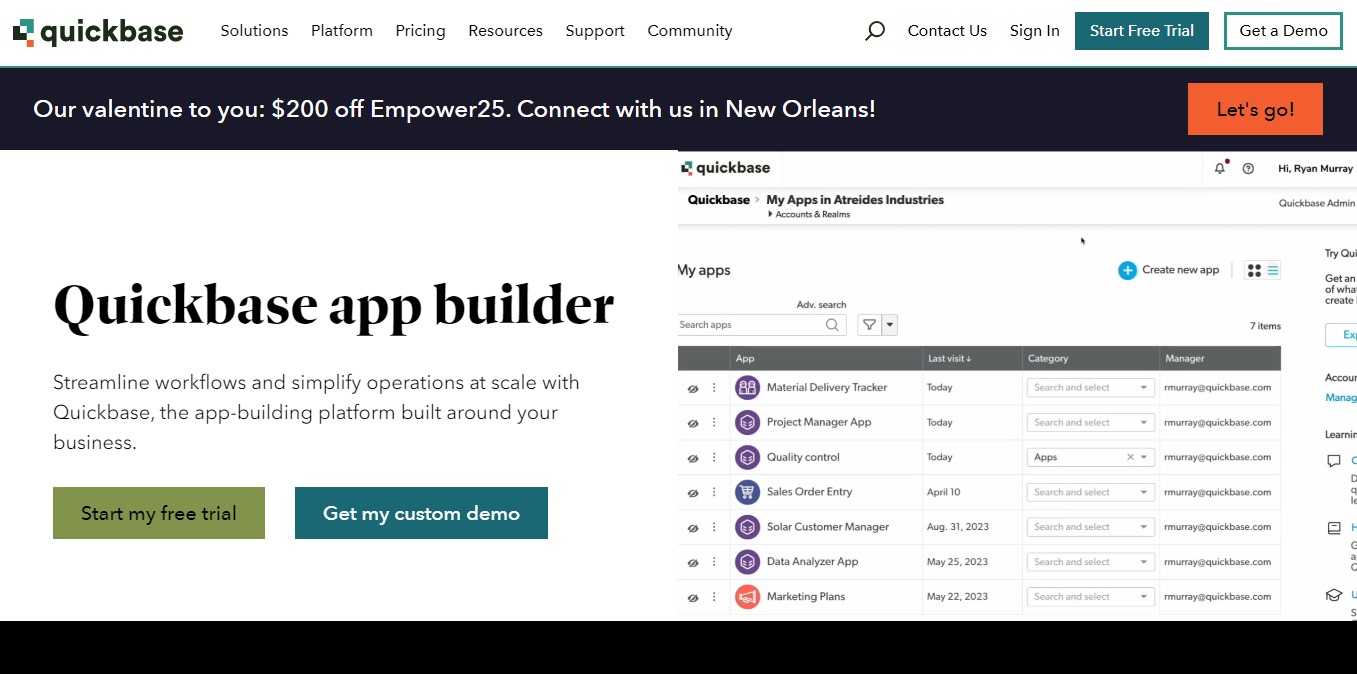
✅ Free Trial: 30 days
❌ Forever Free Plan: Not Available
💰 Pricing: Starts at $30 per user/month
📌 Product Description:
Quickbase enables teams to build business apps without complex coding, offering powerful workflow automation.
🔹 Use Case: Business automation, collaboration tools
🎯 Target Group: Enterprises, teams, IT departments
🔹 Key Features:
- Automated workflows
- Secure authentication
- Audit logs
8. Oracle APEX

✅ Free Trial: Available
✅ Forever Free Plan: Available with Oracle Database
💰 Pricing: Starts at $360/month
📌 Product Description:
Oracle APEX is a robust low-code development environment for creating data-driven applications.
🔹 Use Case: Enterprise database applications
🎯 Target Group: Large enterprises, database administrators
🔹 Key Features:
- REST API integration
- Multi-language support
- Security & encryption
9. Retool

✅ Free Trial: Available
✅ Forever Free Plan: Limited to 5 users
💰 Pricing: Starts at $10 per user/month
📌 Product Description:
Retool is a low-code development platform focused on internal business apps and workflow automation.
🔹 Use Case: Internal business tools
🎯 Target Group: Startups, enterprises, IT teams
🔹 Key Features:
- Drag-and-drop UI
- API integrations
- Fine-grained access controls
10. Microsoft Power Apps

✅ Free Trial: 30 days
✅ Forever Free Plan: Developer Plan
💰 Pricing: Starts at $5 per user/month/app
📌 Product Description:
Microsoft Power Apps integrates with Microsoft 365, Dynamics 365, and Azure, making it an ideal choice for businesses already using Microsoft services.
🔹 Use Case: Business process automation, data visualization
🎯 Target Group: Small businesses, enterprises, IT teams
🔹 Key Features:
- No-code chatbot builder
- AI-powered insights
- Extensive Microsoft integrations
Quick Tips to Enhance Low-Code Mobile App Development
✔ Optimize for mobile-first experiences to enhance usability.
✔ Use pre-built templates to speed up development.
✔ Test frequently and iterate based on user feedback.
✔ Ensure security compliance from the start.
✔ Leverage AI-powered automation for efficiency.
Low-Code vs. Traditional Code Development
1. Development Speed
- Low-Code: Faster development (weeks instead of months).
- Traditional Code: Longer development cycles (months or years).
2. Skill Requirement
- Low-Code: Requires minimal coding knowledge; accessible to non-developers.
- Traditional Code: Requires advanced programming skills and expertise.
3. Customization & Flexibility
- Low-Code: Limited customization but sufficient for most business applications.
- Traditional Code: Highly customizable with complete control over functionalities.
4. Cost Efficiency
- Low-Code: Lower development costs due to reduced labor and faster deployment.
- Traditional Code: Higher costs due to skilled developers and longer timelines.
5. Scalability
- Low-Code: Scalable but may have limitations for highly complex applications.
- Traditional Code: Fully scalable with complete flexibility.
6. Security & Compliance
- Low-Code: Built-in security features, but some platforms may have compliance limitations.
- Traditional Code: Full control over security measures and compliance standards.
7. Maintenance & Updates
- Low-Code: Easier maintenance with automated updates.
- Traditional Code: Requires ongoing manual maintenance and debugging.
8. Use Case Suitability
- Low-Code: Best for business process automation, internal tools, and MVPs.
- Traditional Code: Best for highly complex, custom enterprise solutions, and software products.
9. Integration Capabilities
- Low-Code: Offers pre-built integrations but may have limitations for custom APIs.
- Traditional Code: Full integration control with any third-party service.
10. Time to Market
- Low-Code: Faster launch time, ideal for businesses needing quick solutions.
- Traditional Code: Longer development cycles, but highly optimized for performance.
Final Verdict
- If you need speed, efficiency, and cost savings, low-code is the way to go.
- If you require maximum customization, security, and control, traditional coding is the better choice.
How to Choose the Best Low-Code Platform?
Before selecting a low-code platform, consider the following factors:
- Ease of Use: Does the platform have an intuitive interface that non-developers can use?
- Integration Capabilities: Can it connect seamlessly with existing enterprise software and third-party applications?
- Scalability: Can the platform grow with your business needs?
- Customization & Flexibility: Does it allow adding custom code when necessary?
- Pricing: Is the pricing model cost-effective for your business?
- Security & Compliance: Does it offer security features, data encryption, and compliance with regulations?
What is the Future of Low-Code?
The low-code industry is set to grow exponentially over the next decade. With AI-driven development, automation, and enhanced integration capabilities, low-code platforms will become even more sophisticated. By 2030, 80% of enterprise apps will be developed using low-code solutions, further democratizing software development.
Conclusion
Low-code development platforms have revolutionized the way businesses build applications, offering speed, efficiency, and flexibility without the need for extensive coding knowledge. In 2025, these platforms will be more powerful than ever, integrating AI, automation, and cloud technologies to streamline development and enhance digital transformation.
Whether you are a small business owner, an enterprise IT team, or a non-technical professional, the right low-code platform can help you rapidly build and deploy applications tailored to your specific needs. With features like drag-and-drop interfaces, pre-built templates, seamless integrations, and security controls, these platforms enable organizations to reduce development costs, increase productivity, and stay competitive in the ever-evolving tech landscape.
When choosing the best low-code platform, consider factors such as pricing, scalability, integration capabilities, and ease of use. Each platform has its unique strengths, whether it’s Mendix for enterprise-grade solutions, OutSystems for user-friendly customization, or FAB Builder for rapid web application development.
Platforms like WaPaS enable businesses to create loyalty programs quickly, automate promotions, and create seamless customer engagement experiences. By integrating low-code solutions, WaPaS allows businesses to digitize payments, design custom rewards campaigns, and enhance customer interactions—all without the need for extensive coding expertise.
As businesses continue to prioritize agility, automation, and digital transformation, adopting a low-code platform will no longer be an option—it will be a necessity. By leveraging the right platforms, you can accelerate innovation, enhance collaboration, and future-proof your business in the digital age.
Ready to build smarter and faster? Choose the best low-code platform for your needs and take your application development to the next level in 2025! 🚀
Frequently Asked Questions
What is a low-code development platform?
A low-code development platform is a software tool that enables users to build applications with minimal coding. It uses drag-and-drop interfaces, pre-built templates, and automation tools to accelerate app development.
What are the key benefits of low-code development?
Key benefits of low-code development:
- Faster development: Reduces time to market
- Lower costs: Minimizes reliance on expensive developers
- Improved collaboration: Bridges the gap between business teams and IT
- Scalability: Easily adapts to business growth
- Security & compliance: Built-in security features for data protection
How does FAB Builder compare to other low-code platforms?
FAB Builder stands out as an AI-powered low-code platform that enables rapid development of custom business applications, SaaS solutions, and enterprise automation tools. It offers:
- AI-driven code generation for full-stack applications
- Enterprise-grade security and compliance
- Pre-built templates for faster app deployment
- Multi-cloud scalability for seamless integrations
- Real-time collaboration for development teams
What types of applications can be built with low-code platforms?
You can build business process automation tools, enterprise applications, customer portals, mobile apps, web apps, internal tools, and AI-driven solutions using low-code platforms.
What is the future of low-code development?
By 2030, 80% of enterprise applications will be built using low-code. AI, automation, and cloud computing advancements will make low-code development even more powerful.
